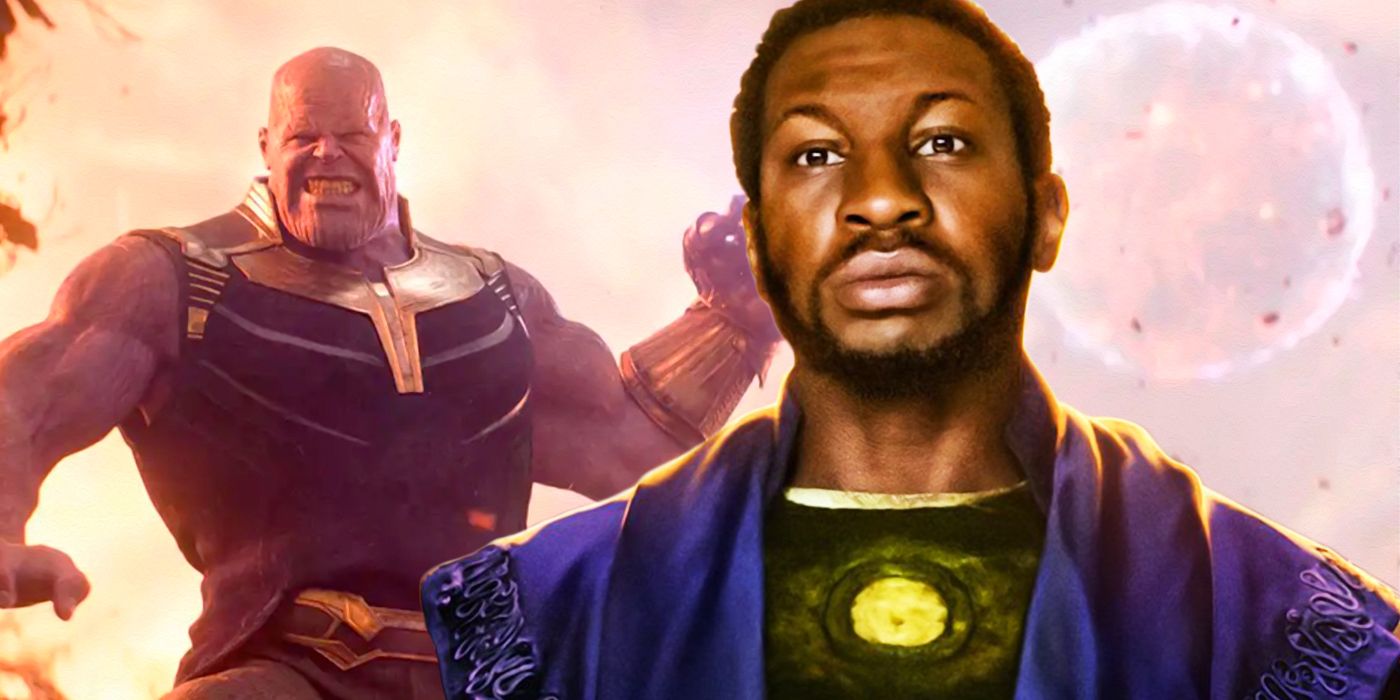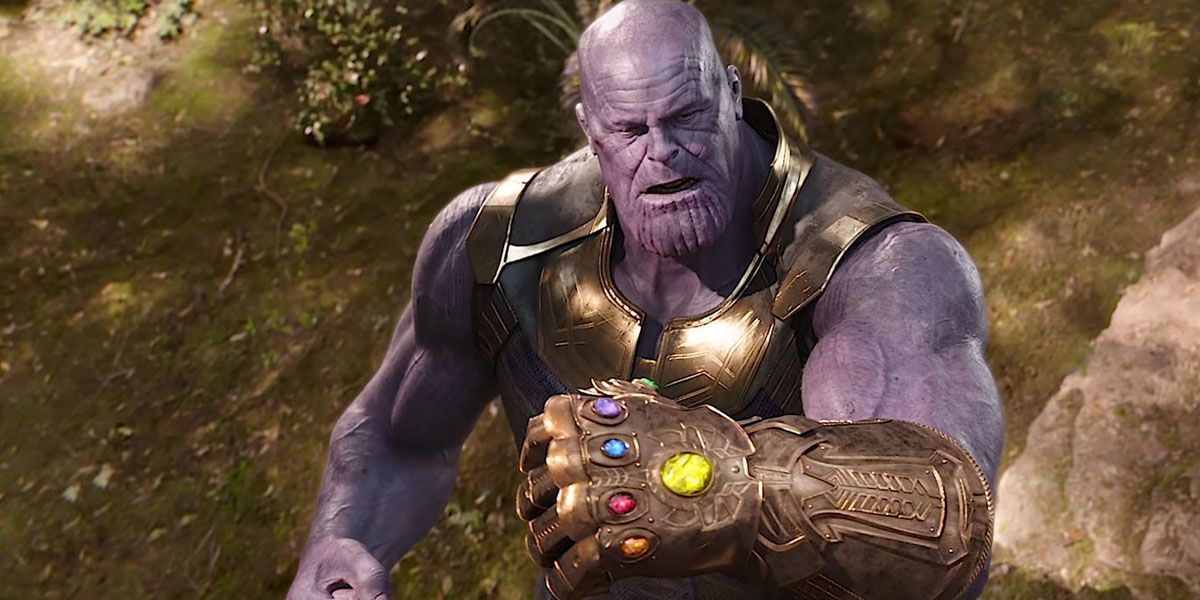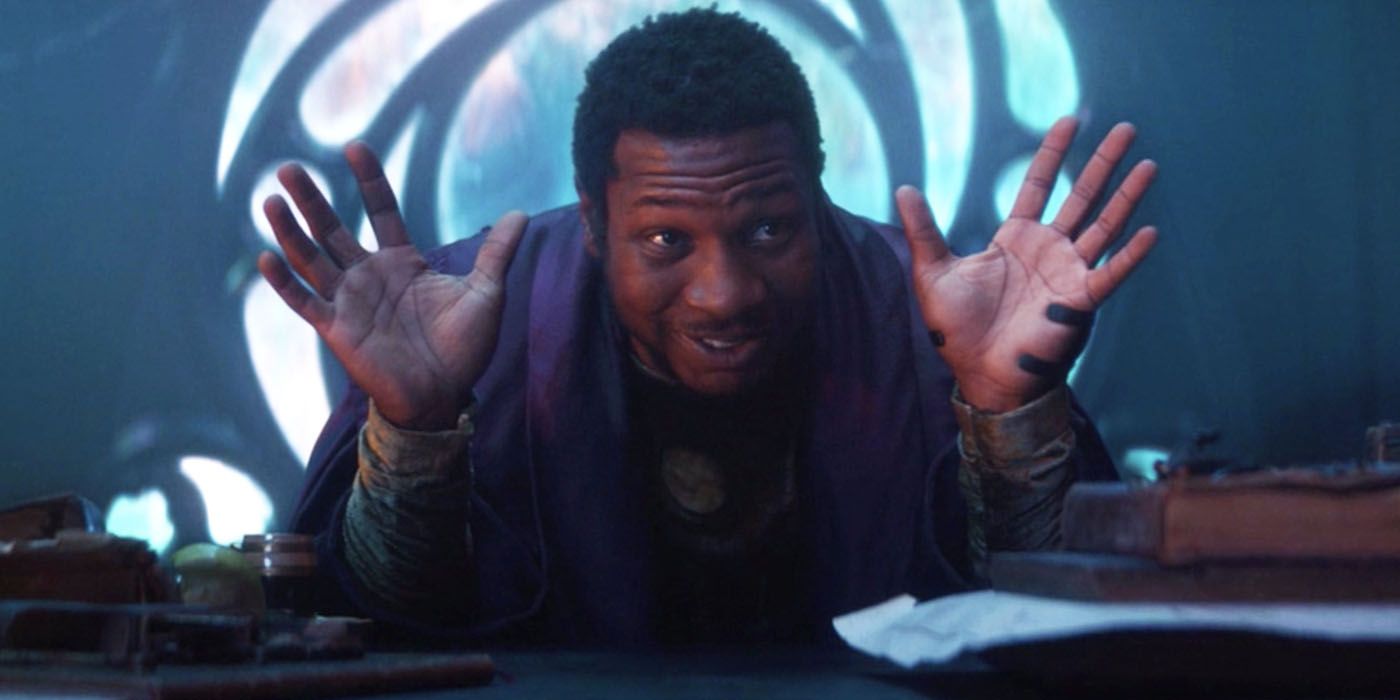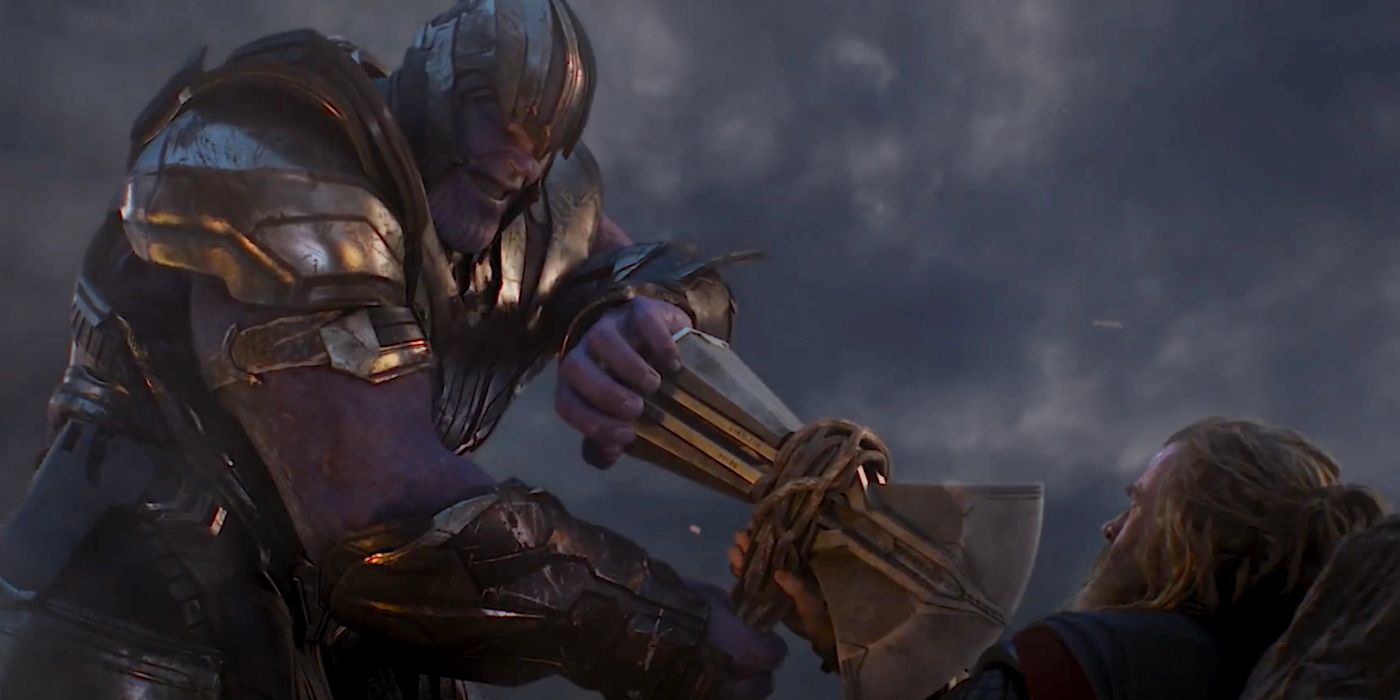In the aftermath of Avengers: Infinity War and Avengers: Endgame, it is commonplace to see fans widely praising Thanos as one of the best villains of the Marvel Cinematic Universe. Given that Infinity War essentially serves as a showcase for Thanos mopping the floor with the entirety of the MCU's various hero team-ups and then ends with the heroes ultimately losing everything to him, this is no surprise. His narrative importance, combined with Josh Brolin's intimidating performance, made fans feel that Thanos' role as the big bad was truly earned.
With the recent announcement of Avengers: The Kang Dynasty serving as one of the closing chapters of the MCU's Multiverse Saga, it appears that the new big-bad of this saga is Jonathan Majors' Kang. While fans are sure to look back on Thanos' tenure in the Infinity Saga with rose-colored glasses, the truth is that Kang is already a better villain for this saga than Thanos was for the Infinity Saga.
For as much as Marvel stuck the landing with Thanos in Infinity War and Endgame, it spent an entire decade before that completely unsure of what to do with the Mad Titan. Originally introduced in the post-credits stinger of The Avengers all the way back in 2012, Thanos initially had a different visual design, a different actor (Damion Poitier) and even completely different motivations. It is heavily implied in the Joss Whedon-directed scene that Thanos' plan is to "court death," just as it was in the comic books, where Death is a literal character with whom Thanos is in love.
The next time audiences saw Thanos, just two short years later in 2014's Guardians of the Galaxy, some serious alterations had already been made. The James Gunn-directed scene gave audiences their first full look at the redesigned and armor-clad character (now played by Josh Brolin) sitting upon his throne. It also established his relationship with his daughters, Nebula and Gamora. He would then reappear the very next year in the post-credits scene of 2015's Avengers: Age of Ultron, with Brolin and the visual design carrying over verbatim. Here, Thanos finally got up, donned the Infinity Gauntlet and said, "Fine. I'll do it myself."
All of this amounted to essentially nothing. Across the first three Phases of the MCU and these first three appearances before Infinity War, Thanos had no active role in the story of the Infinity Saga. Audiences were told post hoc that he was responsible for Loki's attack on New York in The Avengers, and Avengers: Age of Ultron's post-credits scene seemed to imply he had a hand in Ultron's creation as well, but the character himself didn't actually do anything onscreen. He showed up to look menacing and serve as little more than a frequent reminder of where the story was heading.
This resulted in the Russo Brothers and co-writers Christopher Markus and Stephen McFeely being left to do pretty much all the heavy-lifting on the character in Infinity War. That film had to spend the bulk of its runtime developing Thanos into a real character, essentially making him the film's protagonist to keep the long-teased villain's reign of terror from feeling unearned. Combined with Infinity War's already exceedingly dense list of characters it was attempting to juggle, the result was a noticeably spread-thin story that never quite felt like it could devote enough time to any of its characters.
However, Marvel clearly learned from these pitfalls because its current approach with Kang is the exact opposite of its initial approach to Thanos. This is evident in the stark differences between each character's first appearance alone. Thanos was introduced in a single teaser shot in a post-credits scene, with neither the design nor performer yet locked in, and served no purpose other than to let fans know he exists in the MCU. Conversely, Kang's introduction in the Kate Herron-directed final episode of Loki is a profoundly intimate sequence. In it, Jonathan Majors shows up to not only establish Kang's multi-layered role in the larger story but also painstakingly establish the character's emotional state, motivations and internal conflicts via his wondrous performance.
The sequence gives Majors a phenomenal incubatory space in which to develop Kang and also establishes him as a genuine character straight out of the gate. Majors' Kang is confirmed to show up next in Ant-Man and the Wasp: Quantumania, where he will serve as that film's primary villain. Pair this with the fact that the character is also all-but-certain to appear in the second season of Loki, and Kang is not only appearing in many Multiverse Saga projects but playing utterly crucial roles in them.
Part of the reason why Marvel can do this has to do with the multitude of Kangs. As outlined in his introduction, there are numerous Kangs (all of whom are played by Majors so far) spread across the multiverse, and the killing of "He Who Remains" in Loki results in an even more ruthless Kang the Conqueror showing up. With this conceit built into the character, Marvel can have its cake and eat it too. If Thanos had shown up as a primary villain in an earlier MCU film, audiences would have known that there was no real chance of Thanos being killed because he had to show up in later films. Kang, however, is a complete wild card.
Even this feels like a lesson learned on Marvel's part. In Endgame, when The Avengers show up at Thanos' doorstep and behead him in the opening sequence, it is a genuinely surprising moment that seems destined to spurn a different kind of storytelling for the film. And it does... at first. The film ultimately uses time travel to circle back to an earlier version of Thanos and bring him into the main timeline so that all the heroes still have someone to punch in the finale. But, as teased by his interaction with Scarlet Witch's "you took everything from me" and Thanos' honest response of "I don't even know who you are," this creates some undesired dissonance in the final fight.
The Thanos present in Endgame's finale isn't the Thanos from Infinity War and doesn't know these characters, so all the emotional stakes are kind of deflated. By contrast, the multitude of Kangs all shares a kind of hive mind, in which each one is aware of the actions and histories of the others. Thus, Kang could theoretically die and have another version of himself show up to fight without running into these same issues.
The Multiverse Saga could not have asked for a better villainous introduction than the one Kate Herron and co. gave Jonathan Majors' Kang in Loki. With such a fertile foundation in character, Kang's villainy across the next phases of the MCU should be something truly special to witness, all building to his climactic role in The Kang Dynasty and Secret Wars.





